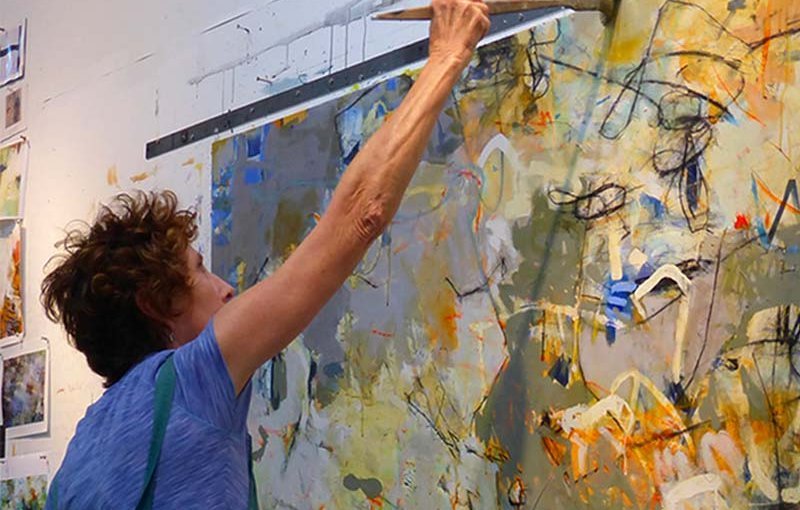See Harris’s work in WTP Vol. VII #3
Inside the Studio offers a behind-the scenes peek into the work environments of WTP artists, as well as insight into their creative process within these resonate spaces.
By Jennifer Nelson, WTP Feature Writer
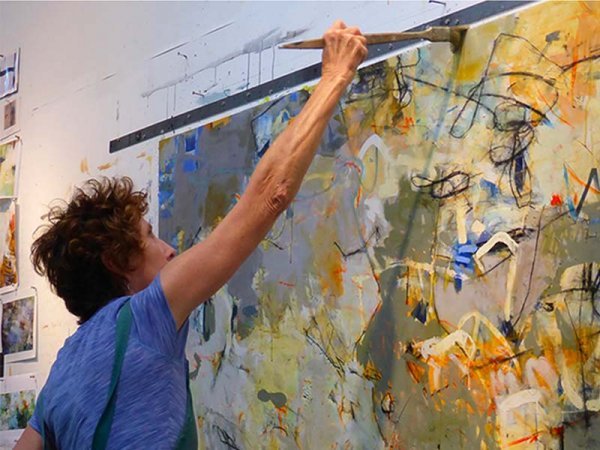
In 2007, Krista Harris renovated her log cabin studio in Bayfield, Colorado. Her 16′ x 32′ studio could not accommodate her large acrylic paintings nor the materials she needed—she was in an experimental phase that suited her. “This was a great investment in myself and my work, giving me validation and freedom,” says Harris. To finance the renovation, she sold her car.
For the redesign, she installed a large wall to work on, bigger doors for moving paintings in and out, and skylights. The studio was expanded to include more storage space and a loft for a library. “Now twelve years later I wish I had twice the space,” she says. “In a perfect world, I’d have a designated area for working on paper, as well as more storage for shipping and crating, possibly even room to teach eight students at a time.”
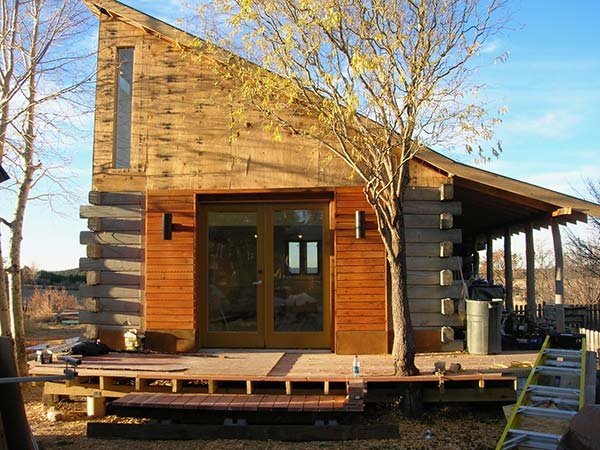
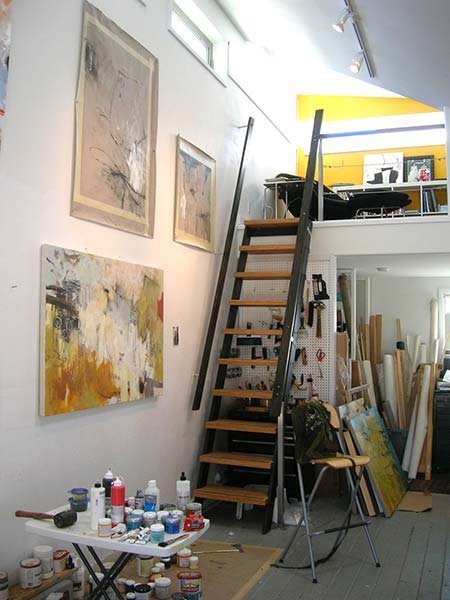
The original studio was built in 1987 from a log cabin kit, with large west-facing windows and views of the pasture, as well as of apple, pear, and plum trees, and the San Juan Mountains. On the property near the town of Durango, she and her husband ran an outfitting business, which involved horseback riding trips. They had thirty horses and pastures and ponds. “I kept a vegetable garden there for years, until it proved too big a distraction of actually getting to work in my studio,” she said.
Harris’ favorite time of the day is the early morning when she arrives in her studio. She’s barely awake—sometimes she’s still in her pajamas—and she hasn’t yet checked her email or let her brain get distracted. In the summer, she leaves the door open, the only sound, the chatter of blackbirds. This is often her most productive time—though it might last only forty-five minutes. “I can usually see what is working or not working in a piece almost instantly and I’m not judgmental or attached.”
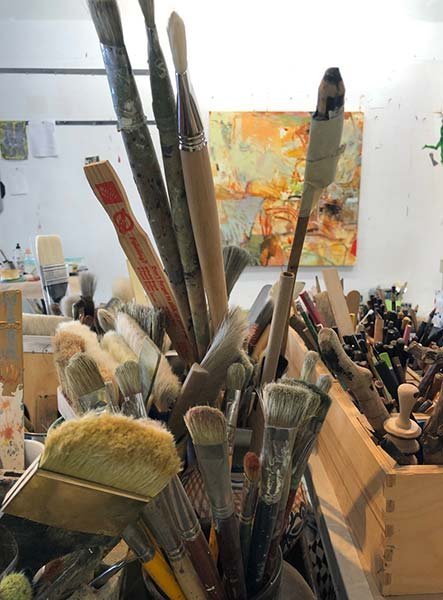
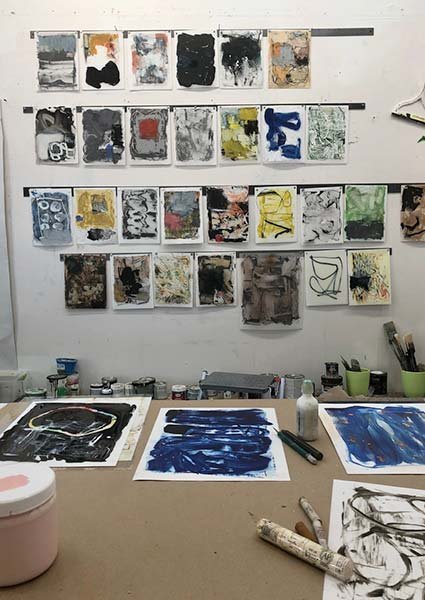
For Harris, her studio is her safe space. There she can breath and focus without interruption. She’s very protective of her time there, taping a “Do Not Disturb” sign to the glass when she’s at a crucial point in her work. “Walking through the door is almost like time travel,” she said. “I can pick up where I left off or go down a different path entirely.”
Over the past year, she has been researching residencies with the idea of participating in one. She believes that location informs her work, and is curious about what would happen if she worked in a different environment. “I don’t want to get too comfortable where I am for fear of not growing,” she said. “Specifically, I would love the opportunity to do a series of large-scale works on paper or some material I haven’t even considered yet.”
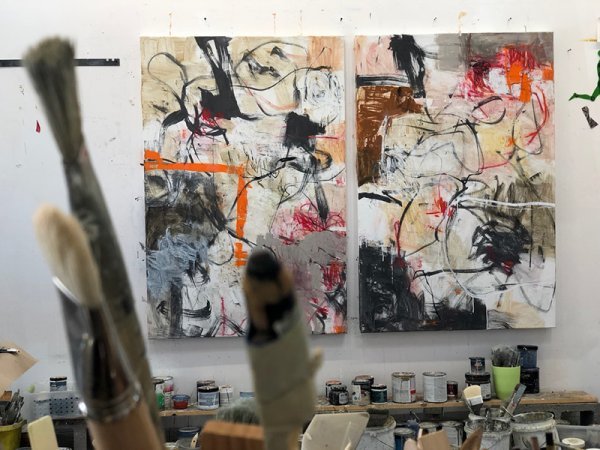
As Harris ages, she’s becoming more aware of the value of time; it’s no longer an unlimited resource. Looking ten years into the future, she tries to set goals for herself: “I want deeper discourse in my work, questioning what and why I choose to create, being more mindful of the gift and responsibility of being an artist.”
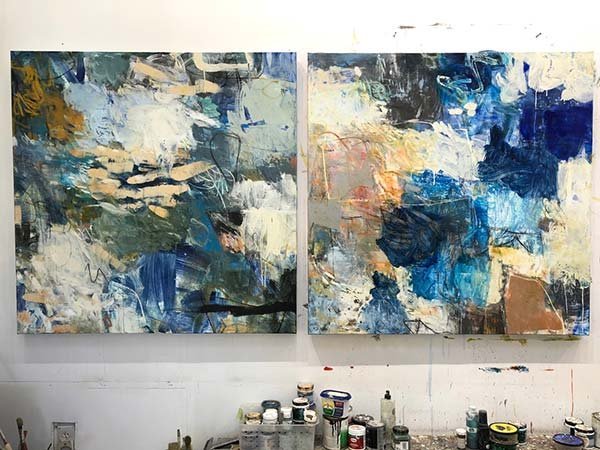
Copyright 2019 Woven Tale Press LLC. All Rights Reserved.

